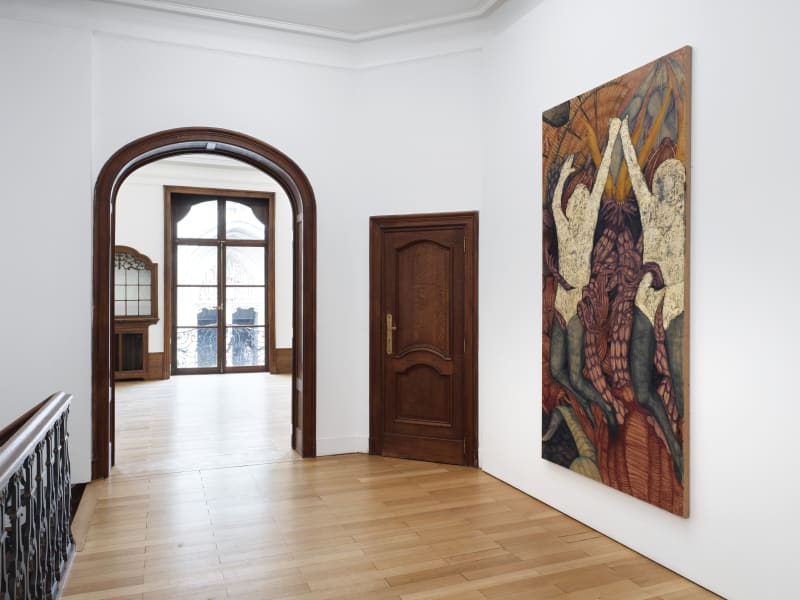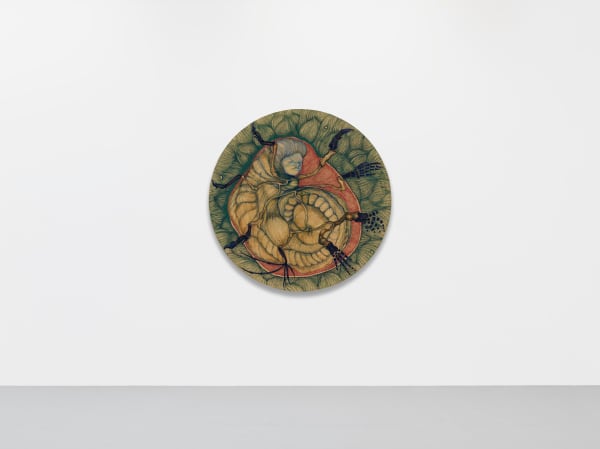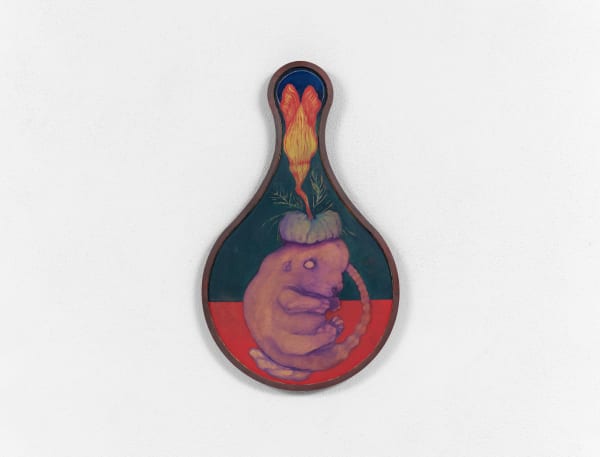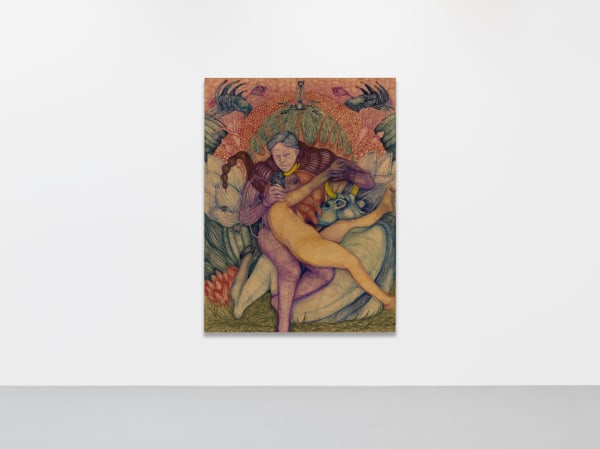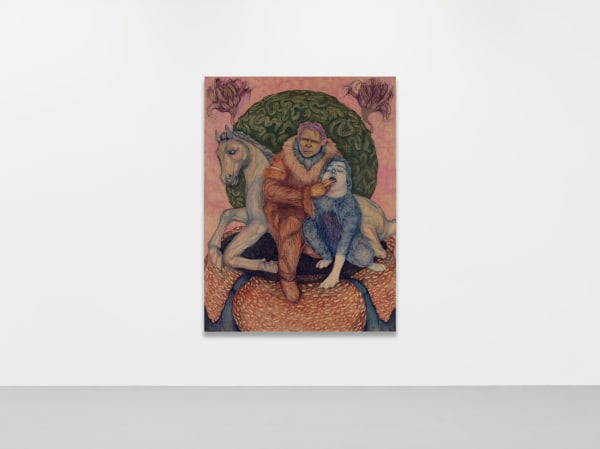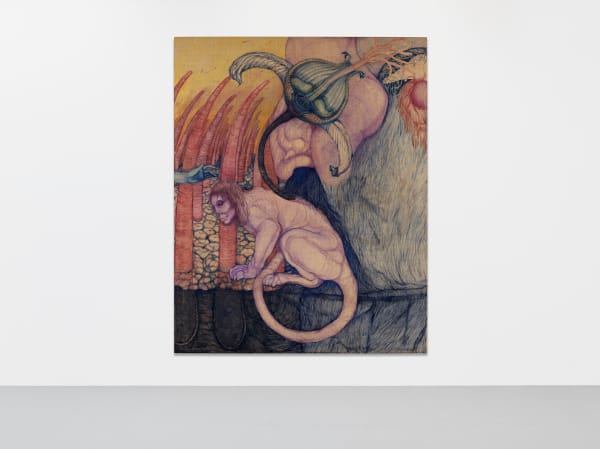The Gardener’s Son Victor Bengtsson
Mendes Wood DM is proud to present a first solo exhibition of work by the Danish artist Victor Bengtsson to take place in its Brussels gallery space.
Taking over the entirety of the top floor of the gallery’s Sablon townhouse, Bengtsson’s mostly large-scale paintings simultaneously straddle a three-part chronological divide. The works adopt recognisably old aesthetics, commonly associated with Mediaeval and Renaissance art, to address ethically complex issues relating to the brutal history of modern medicine in the 18thand 19th centuries – issues that are arguably more pressing today than they ever were.
Bengtsson, who is currently studying medicine at the University of Copenhagen, has taken singular and often troubling events and stories from medical history and used them as springboards for elaborate compositions. The exhibition itself takes its title from one of the works in the show, The Gardener’s Son, which refers to a real event that took place in 1796. A British physician, Edward Jenner, noticed that his milkmaid, who was in frequent contact with his cows, who would often suffer from cowpox, seemed to be the only person resistant to a local smallpox outbreak. He hypothesised that she had become immune to the disease, so he forcibly inoculated his own gardener’s son, against his will, with cowpox. After a brief illness, it became clear that the boy had achieved immunity against the dreaded smallpox disease. In short, Jenner had just invented the world’s first vaccine, but at what cost? Is one life more or less valuable than another? What are the ethical limits that should govern medical research? Should there be any? Who gets to decide?
In a similar fashion, The Mad Dog from Alsace depicts the famous French physician Louis Pasteur, who inoculated a young French boy, who had just been attacked by a “mad dog”, with a rabies vaccine that he had been working on at the time. This boy, Joseph Meister, became the first human test subject for an unproven medical solution.
Other works in the show focus on contemporary examples of questionable medical ethics. Bengtsson is particularly interested in the story of the trademarked OncoMouse, the first example of a patented species of animal, in this case a mouse, which the DuPont medical company destined to the single purpose of oncological research. These mice effectively become surrogates for human suffering, a concept that carries strong Christian connotations. In turn, these connotations find art-historical resonances in the artist’s painterly style and technique. Frequent floral and forest-like imagery connect with the idea of Eden, of our fall from it and of Christ’s self-assumed suffering in lieu of ours.
Bengtsson uses thick jute canvases as bases for his compositions, which soak up large quantities of undiluted oil paint that stands out in stark contrast to his occasional use of gold leaf. The overall visual effect of these works is similar to that of a Mediaeval or Renaissance tapestry, which were made during historical periods in which Christianity informed almost all aspects of life, art and science. Furthermore, the Renaissance also saw a renewed attention to medicine and to the human body, which often put it directly at odds with religious dogma, and would continue to do so for centuries to come, from the dissection of human bodies in Renaissance universities, to the ethics of 19th-century medical experiments, all the way to modern day cloning, IVF and genetic manipulation.
Crucially, only the researchers and the scientists were ever celebrated by history, never the surrogates, never the victims. In this sense, Bengtsson wishes to turn the audience’s attention to the unsung heroes of medical history who, human or not, and mostly against their will, provided the basis for the advancement of the entire human race.
Victor Bengtsson (b. 1997, Copenhagen, Denmark) lives and works in Copenhagen.
Bengtsson studied fine arts at the Vera School of Art and Design and the Krabbesholm Højskole before he began training to become a doctor at the University of Copenhagen. His practice spanning both the arts and medicine informs his painterly work with an understanding of their respective histories and the relation between them. Bengtsson’s singular imagery is the result of formal experimentation with his materials over the years and has drawn reference to the traditions of the Pre-Raphaelites, the Danish Golden Age, as well as Art Nouveau in its contemporary representation of medical subjects. This exhibition follows his solo presentations titled Proscenium at Mendes Wood DM, São Paulo (2021); and Foraarets Horisont at VÆG Gallery, Aalborg (2021). While his work has also been featured in group exhibitions at eastcontemporary Gallery, Entrevaux (2021) and the Den Frie Centre of Contemporary Art, Copenhagen (2020).
-
 Victor Bengtsson, Cosmas and Damian, 2022
Victor Bengtsson, Cosmas and Damian, 2022 -
 Victor Bengtsson, Harelip, 2022
Victor Bengtsson, Harelip, 2022 -
 Victor Bengtsson, Double Cylinder Homunculus, 2022
Victor Bengtsson, Double Cylinder Homunculus, 2022 -
 Victor Bengtsson, The Gardener's son, 2022
Victor Bengtsson, The Gardener's son, 2022 -
 Victor Bengtsson, OncoMouse, 2022
Victor Bengtsson, OncoMouse, 2022 -
 Victor Bengtsson, The Race to Nome, 2022
Victor Bengtsson, The Race to Nome, 2022 -
 Victor Bengtsson, The Selfish Gene, 2022
Victor Bengtsson, The Selfish Gene, 2022 -
 Victor Bengtsson, Lion's face, 2022
Victor Bengtsson, Lion's face, 2022 -
 Victor Bengtsson, The Mad Dog from Alsace, 2022
Victor Bengtsson, The Mad Dog from Alsace, 2022
